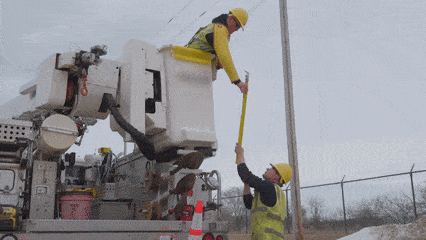Cleaning Rubber Goods for Safety
How the right cleaner can improve worker safety and extend the life of tools by uncovering hidden damage and restoring high visibility.
Originally published in Utility Products, August 2006
A power utility got a big surprise recently when they tested a specially formulated rubber goods cleaner on a hot-line jumper. Type RBG Rubber Goods Cleaner from Polywater® revealed potentially hazardous burn and cut damage lurking beneath the grimy, blackened surface. The failed tool was removed from service, averting possible injury.
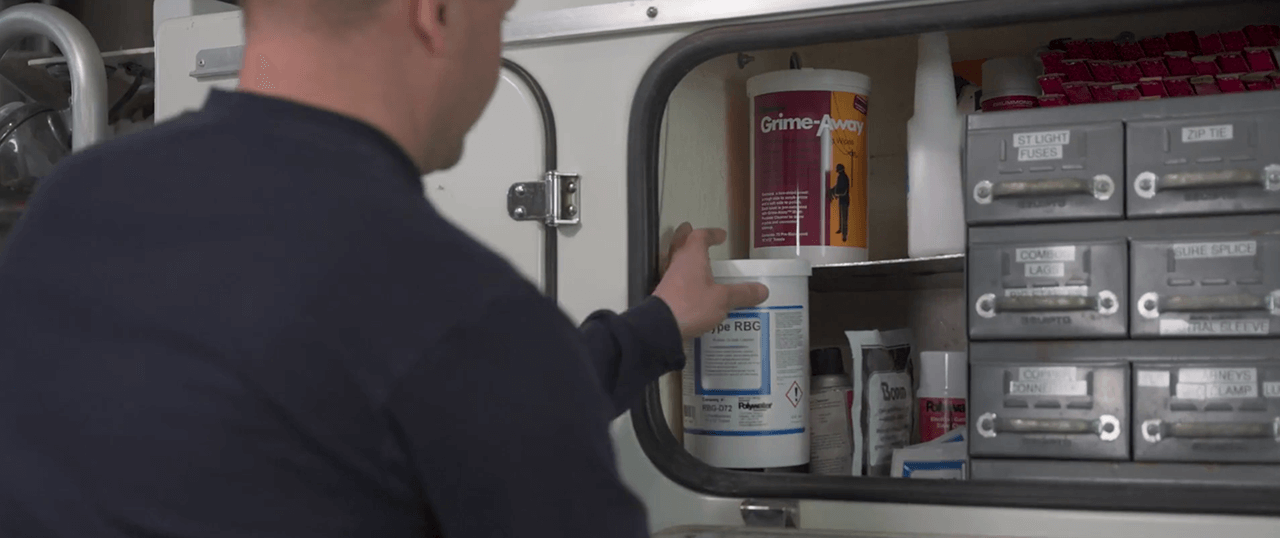
Remove Grime, Reveal Damage
Rubber goods take a beating in the field. Dirt and grime build-up turns tools black. Any change in appearance is a warning that the rubber may not retain its electrical insulating property. Protective rubber equipment should be inspected for anything that might compromise its integrity. But grimy discoloration can mask damage. Abrasions, burns, cuts, and minor nicks are particularly difficult to detect on dirty rubber goods. Regular cleaning before each inspection is the best way to stay safe.
| Related Content: Video: How to Clean and Inspect Insulating Rubber Goods |
Variety of Damage Possible
Protective rubber goods are not used in a pristine environment. Rubber is soft and particularly susceptible to physical and chemical damage. Damage can be caused by cuts from sharp tools, punctures from wood splinters and barbed wires, degradation from chemicals such as hydraulic fluid or agricultural fertilizers, and much more.
Scratches and scuff-like damage are normally caused when rubber comes in contact with a rough, abrasive surface. This may appear like graining on leather. Nicks, snags, scratches or cuts are typically caused by objects such as knives, pointed tools, sharp edges on electrical equipment, barbed wire, staples, or splinters. This damage is particularly evident—and exacerbated when rubber is placed under strain, such as stretching. Punctures occur when sharp objects penetrate the entire thickness of the rubber. Embedded foreign matter may appear as a small bump in the rubber. Tears describe the separation of the rubber, usually at the edge, created when the rubber is pulled apart forcefully.
Other kinds of damage are the result of electrical leakage and tracking, as well as chemical degradation. Tracking and breakdown result from excessive electrical leakage over the surface of the rubber. Ozone cracks, a series of interlacing fractures that start at stress points, are caused by continuous exposure to the elements. Age cracks look like glazed ceramic crazing, and worsen with time. These are usually caused by exposure to sunlight and atmospheric ozone, and originate in stressed areas of the rubber. Hard and soft spots are usually created by contact with heat, oils, or chemicals.
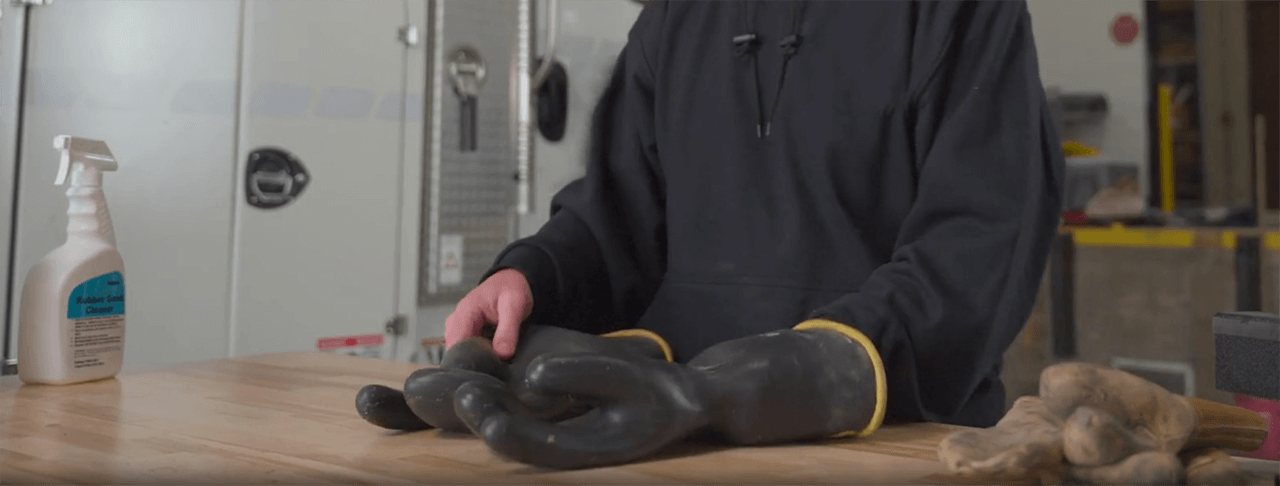
Roll the Rubber
ASTM F1236 Guide for Visual Inspection of Electrical Protective Rubber Products presents techniques for the visual inspection of electrical protective rubber goods. The preferred method of inspection before each use is to gently roll the entire surface. Lightly squeezing the outside and inside surface of the rubber highlights irregularities that can occur from the damages described above. For gloves and sleeves, carefully pinch and roll the rubber. Once the outside surface is thoroughly checked, continue the inspection by turning the glove inside-out and rolling the inside surface. Never leave a glove or sleeve in an inside-out condition. For blankets, lay on a clean, flat surface and roll tightly, starting at a corner. Line hose can be inspected by slowly bending two ends of the hose downward, forcing the slot open for better inspection. Work through the entire length of hose for a thorough check. Gloves can be manually inflated to test for punctures and small tears. It is important not to over inflate.
| Related Content: Video: Live-Line Equipment & PPE Cleaning Solutions |
Why Clean?
ASTM F1236 further recommends good lighting and a thorough cleaning before each inspection and use. Protective rubber goods are often contaminated with a variety of grimes such as creosote, pine pitch, corrosion inhibitor, carbon, dirt, grease and oils. Contamination darkens the surface, masking its true color. In the worst cases, contaminating materials cover cuts, burns, small nicks and holes. Cleaning the rubber surface can uncover damage that would otherwise stay hidden.
Regular cleaning is simply good practice. It preserves electrical integrity and adds to the life of the equipment. Some contaminants are less obvious and can’t be seen on rubber goods. Dry fertilizer, herbicide and pesticide residues are invisible, but will degrade rubber’s integrity. Most protective rubbers are designed to resist ultraviolet light, ozone, and oxidants, but tend to be susceptible to chemical damage. Degradation by various contaminants such as oil and grease can cause hard or soft spots and accelerated aging. Other contaminants are conductive, especially when combined with moisture from rain, snow, or high humidity.
Cleaning also restores original color—usually brilliant yellow or orange—to tools. It is crucial that grounding jumpers be clean and highly visible for electrical and vegetation trimming crews. It is especially critical during storm restoration to differentiate tools from dangling branches.
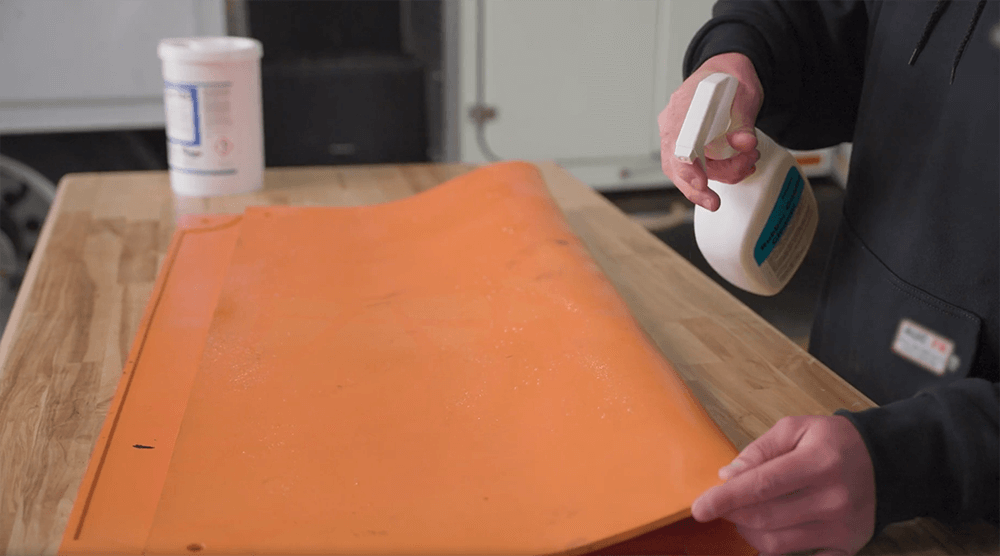
| Related Content: Salisbury by Honeywell approval for Type RBG |
Find the Proper Cleaner
Though they may effectively remove grime, strong industrial cleaners and solvents can also damage protective rubber. Petroleum distillates or hydrocarbons, kerosene, and terpenes such as d-limonene should be avoided. Other solvents commonly added to water-based degreasers, such as glycol ethers, can also degrade the protective rubber properties. Cleaner residue must not change the physical integrity and insulating properties of the rubber. Cleaners should be tested for compatibility with various types of rubber compounds per ASTM D471 and ASTM F496-99 to ensure compatibility and dielectric integrity.
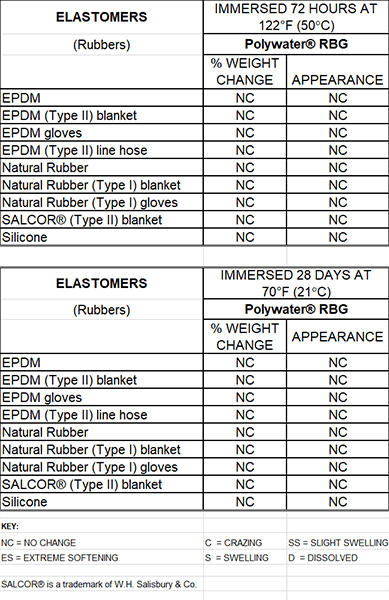
An effective rubber goods cleaner is easy to use. It removes the heavy grimes and contamination typical of utility work without too much “elbow grease.” RBG, a mild, pH-neutral cleaner, is more likely to be used regularly. Convenient package options such as the RBG-35LR spray bottle and the RBG-D72 pre-saturated wipe dispenser also encourage regular use.
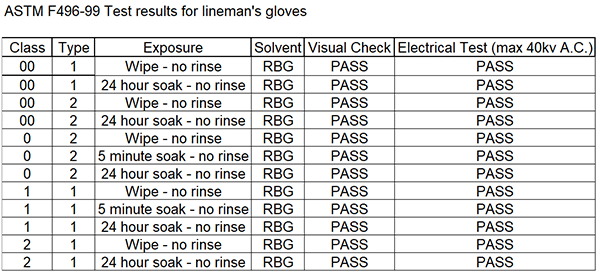
Polywater® Rubber Goods Cleaner is compatible with plastics and elastomers. Testing is based on the soak test described in ASTM D471, Standard Test Method for Rubber Property-Effect of Liquids. Immersion will affect sensitive materials more than with incidental contact of a spray or wipe.
Protective Equipment Testing
Polywater Rubber Goods Cleaner was sent to an independent NAIL® for PET (North American Independent Laboratories for Protective Equipment Testing) accredited laboratory for testing in accordance with ASTM F496 Standard Specification for In-Service Care of Insulating Gloves and Sleeves. Gloves and sleeves are first washed and dried at the testing laboratory. The items are then inflated and carefully inspected for cuts, tears, punctures, scratches, abrasions, or any other conditions that could adversely affect the dielectric integrity of the item. If any of these conditions are present, the item fails the visual inspection and is rejected and immediately rendered unusable. Gloves, sleeves, and blankets then undergo an electrical test as specified by the “class rating” of the item and the ASTM and OSHA Standards (maximum 40kv A.C.). Again, any item that fails the electrical test is rejected.
| Related Content: The Role of Specialty Cleaners in PPE Safety: Q&A with Randy Barnett, NFPA Certified Electrical Safety Professional (CESCP) |
Clean is Safe
Clean and inspect your protective rubber goods before each job. Clean rubber is easier to inspect and provides increased tool visibility in the field. Regular cleaning with RBG Rubber Goods Cleaner prolongs the life and effectiveness of rubber protective goods, and is fundamental to electrical safety.
Sheri Dahlke is vice president of research & development and Tom Fredericks is vice president Americas for Polywater.
